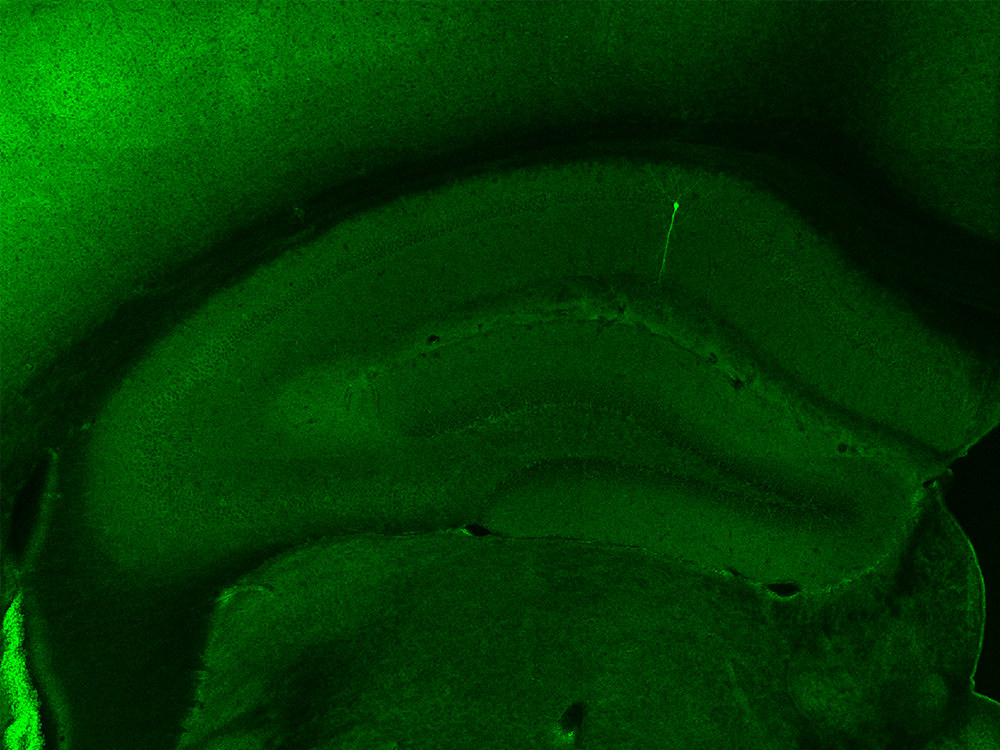IBS 2018 Art in Science
A Tree in the Forest
숲 속의 나무 한 그루
/
Kyu-Hee Lee
이규희
/
Center for Cognition and Sociality
인지 및 사회성 연구단
Many neurons come together to form the brain, just like how trees constitute a forest. By seeing only one tree you cannot know what a forest looks like, and even if you can observe the forest from the sky, you cannot know the types nor the individual roles of each tree. Investigating brain function is similar. This image is a cross-section of hippocampus from a mouse. Among the many neurons in a living mouse, one single CA1 pyramidal neuron was detected. I investigated its activity resulting from interactions with other neurons by using patch-clamp techniques. This technique is used to measure the potential of cell membrane via glass micropipette. To find the patched single neuron and to check its shape, I stained the brain slice with fluorescent dye. Finally, I found the single neuron that was standing alone but shining with green fluorescence. You can find the one 'neuronal tree' in the middle of the forest composed of many neurons.
나무들이 모여서 숲을 이루듯 무수히 많은 신경세포들이 모여 뇌를 구성한다. 나무 한 그루만 보고는 전체 숲의 모습을 알 수 없고, 멀리서 숲만 바라보면 어떤 나무들이 숲을 이루는지 알기 어렵다. 뇌의 기능을 연구하는 것도 이와 비슷하다. 이 사진은 생쥐의 해마 단면을 찍은 사진으로 살아있는 생쥐의 수많은 신경 세포들 중 단 하나의 CA1 피라미드 신경세포만을 탐지한 것이다. 해당 세포가 다른 많은 세포들과 어떤 상호작용으로 활성화되는지 패치클램프 기법으로 관찰했다. 패치클램프란 미세 유리 전극을 이용하여 세포막 전압을 측정하는 실험 기법이다. 패치클램프로 관찰했던 해당 세포를 찾아 모양을 관찰하기 위해 뇌 슬라이스를 형광 염색했고, 그 결과 형광 빛을 내며 오롯이 서있는 단 하나의 신경 세포를 찾아낼 수 있었다. 신경세포들이 만들어낸 숲 속에서 신경 세포 한 그루를 포착한 이미지다.
/
Copyright
Center for Cognition and Sociality
